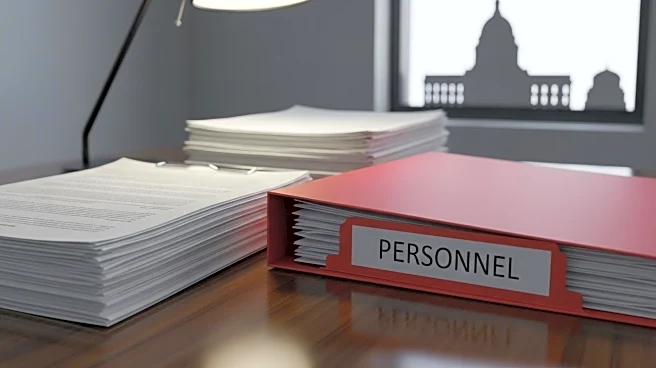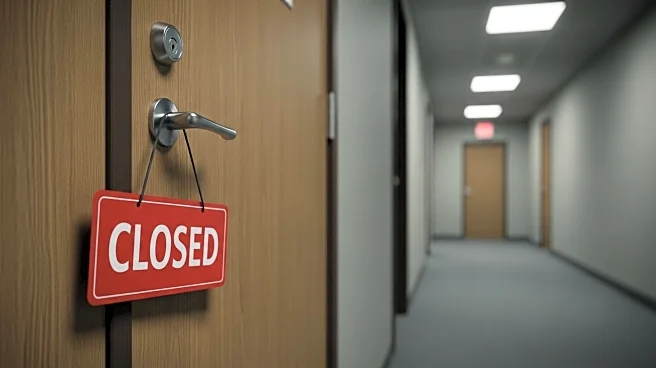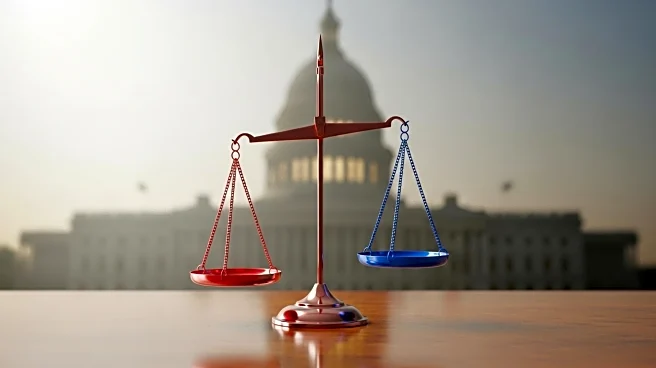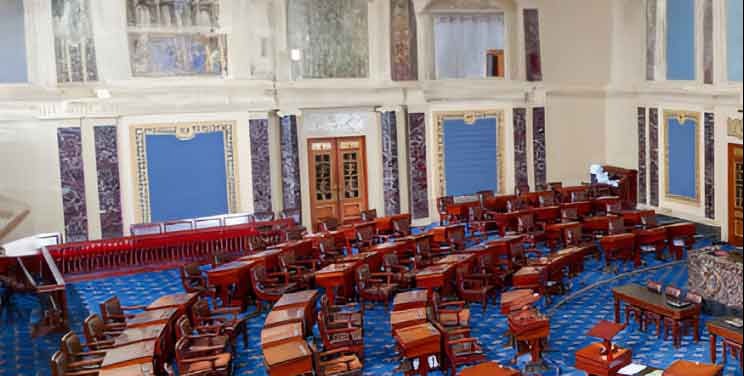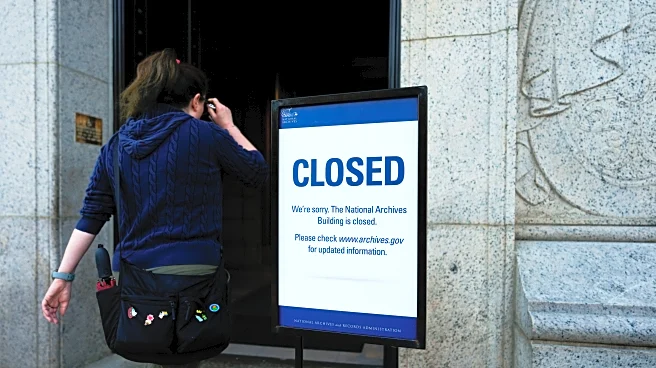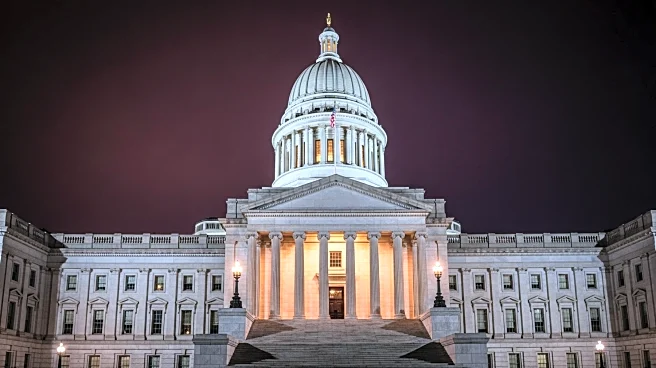What's Happening?
The federal government has commenced a shutdown after Congress was unable to pass a funding bill before the start of the new fiscal year. The Senate failed to advance two short-term funding proposals, leading to the shutdown and potential furloughs for approximately 750,000 federal employees. The Trump administration, led by Office of Management and Budget Director Russell Vought, has instructed agencies to execute shutdown plans, which may include mass layoffs. The shutdown is expected to have widespread effects, with significant economic impacts and disruptions to public services.
Why It's Important?
The shutdown represents a significant political and economic challenge, with potential consequences for federal employees, public services, and the broader economy. The furloughs and potential layoffs could lead to financial instability for affected workers and their families. The shutdown also highlights ongoing political divisions in Congress, as Democrats and Republicans remain at an impasse over funding and policy issues. The situation underscores the importance of bipartisan cooperation in addressing budgetary and policy challenges to prevent disruptions to government operations.
What's Next?
The shutdown is likely to continue until Congress can reach a bipartisan agreement on a funding bill. Political leaders may face increased pressure from constituents and stakeholders to resolve the impasse and restore government operations. The Trump administration's plans for layoffs could face legal challenges from labor unions, which may influence the administration's approach to managing the shutdown. The resolution of the shutdown will depend on negotiations between political leaders and their willingness to compromise on key issues.

